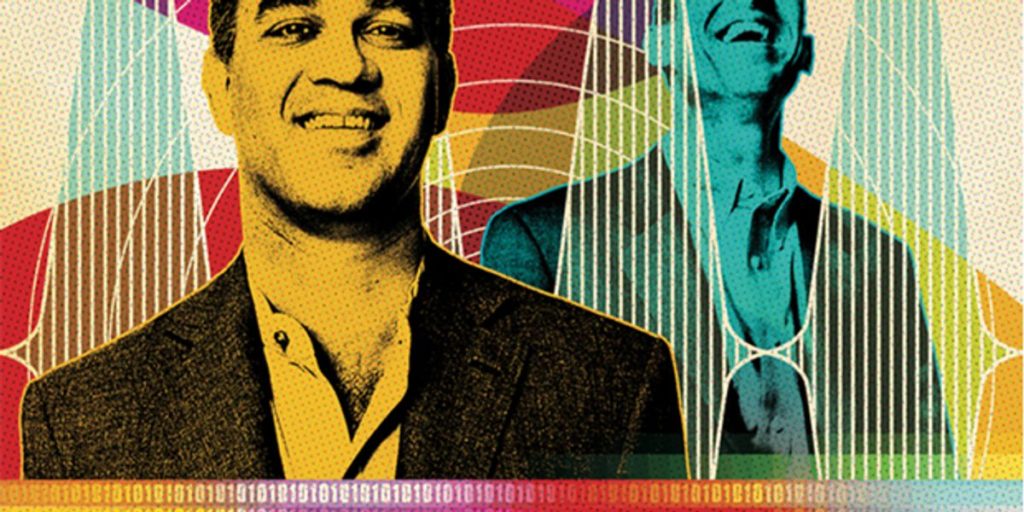Nobody else has ever built a commercial device that uses a general-purpose processor to handle two waveforms simultaneously. But Vanu engineers have now done it twice. Five years ago, they developed a dual-standard prototype radio for the National Institute of Justice, the research arm of the U.S. Department of Justice. That device combined the functions of two radios commonly used by law enforcement: a Motorola two-way FM radio and a Datron unit that used a newer digital standard known as Project 25.
“When you run samples through the same pipe at two different sampling rates, managing the data flow so that you don’t drop data or get stuck turns out to be really, really challenging,” Chapin says. “It’s like listening to two tones that aren’t in harmony—the tones beat against each other and make a dissonant sound. In the same way, the sample streams move in and out of sync.”
After trying various approaches that all proved too labor-intensive, the engineers eventually hit on the idea of using Internet Protocol and sending the packets of data over gigabit Ethernet, which is designed to handle different rates of data, such as e-mail and streaming video. It’s also built into just about every server and computer these days, so there’s no need to construct a dedicated hardware link between the radio front end and the baseband processor.
Gigabit Ethernet has the advantage of being not just reliable and speedy but also a simple and well-understood networking standard, Chapin says, adding, “Wherever possible, our approach is: let’s use the commodity thing.” When 10-gigabit Ethernet rolls out later this year, the sampling capacity will jump by an order of magnitude.
Tackling CDMA was more complicated than the early GSM effort, because the waveform is more sophisticated. “We started by tearing apart the [CDMA] spec,” says Jeff Steinheider, who’s in charge of base-station engineering at Vanu. “Then we spent weeks or maybe months studying the document and identifying areas we knew how to do and figuring out where we needed new algorithms.”
Rather than going off and independently developing their chunks of code, the engineers repeatedly integrated the full system and ran it through an automated testing system. It’s an approach they cribbed from the creators of the Mozilla browser: because those developers weren’t always all in one place, they would periodically check their programming into the test system to make sure everything worked properly together.
“We added radio-specific modules, like one that pretends to be the radio [front end] and speaks gigabit Ethernet,” Steinheider explains. The company also uses its own base stations to route calls around its headquarters, which allows engineers to vet the product under real-world conditions. “That’s the ‘eat your own dog food’ approach,” Steinheider says.
Critics of Vanu’s strategy say that the general-purpose processors it favors won’t be able to cope with more complex waveforms, such as those that fourth-generation cellphone standards undoubtedly will require. Chapin isn’t worried. “I’m prepared for a future in which we can’t just use general-purpose processors,” he says. At that point, he adds, it may make sense to supplement the basic software design by adding a digital signal processor, to off-load the overtaxed Pentiums or Xeons. “So far, though, we haven’t had to do that.”
Vanu the company grew out of work that its founder, Vanu Bose, did as a graduate student at MIT, just down the street from the company’s current headquarters. Bose formed the company in 1998 to commercialize his ideas, but without a clear idea of what type of product or which market to go after. He looked at public safety and automotive applications and landed some military contracts but found no takers in the commercial sector.
During the tech meltdown in 2001, Vanu avoided the fate of many a start-up because it hadn’t accepted any money from venture capitalists. (The company has gotten some angel funding over the years, totaling about $5 million.) Instead, Vanu grew slowly but steadily throughout the downturn and into the recovery, to its current staff of 55, most of them engineers.
In at least one way, the company even benefited from the collapse. Located in the heart of Cambridge’s tech zone, Vanu’s airy glass-and-blond-wood offices previously housed a dot-com that failed. It’s a big step up from Vanu’s previous digs, a former weight-loss center in a suburban strip mall.
To drum up work and show off their approach, Vanu engineers put together a number of clever demos, including a Compaq iPAQ PDA that they programmed to receive and play FM radio signals. ”Everyone told us to stay away from commercial [telecommunications] infrastructure,” Bose says. Plenty of start-ups had foundered trying to roll out new products for the telecom sector. But Bose ultimately decided to give it a try. ”We said it would take us five years to develop our first infrastructure product,” he says. ”I think that was accurate to within a few months.”
At this point the company breaks even, Bose says, with much of the revenue plowed back into R&D. That’s an important lesson he learned from his father, Amar G. Bose, founder of the audio-equipment maker Bose Corp., in Framingham, Mass. In 1981, that company suffered its first loss ever, and yet Amar Bose decided to invest $10 million in developing audio systems for cars, an area in which his firm had no experience. ”Everybody was freaking out and telling him he was crazy,” Vanu Bose says. ”Five years later, automobiles were $100 million of his business.” He grins broadly. It’s clearly a story he never minds repeating.

